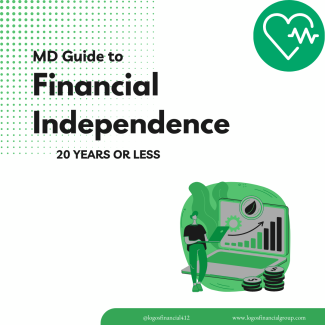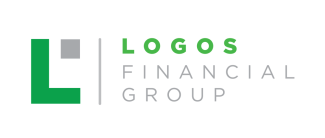
MD to FI: In 20 years or less
You’re a doctor and now you’re an expert in medicine. You took every type of science class, some social behavior classes and possibly a math and accounting class. However, are you prepared to get a 3x-7x pay raise at one time? Do you have a plan for those dreaded student loans and don’t talk about the new tax bill.
“They didn’t teach us this in medical school”, is a common phrase I’ve heard many doctors utter over the years as they get out into the “real world” and have to navigate a demanding schedule along with the mirrade of money situations that they face. When I developed the “0 to FI” system it was designed to provide a simple framework most anyone could follow to achieve their long term financial goals. I wanted to use that framework through the lens of a physician who is just starting in their career and how they can accelerate that framework to achieve their financial goals sooner.
Bio
- 26 - Just graduated med school and matched to a 4 year residency in neurology
- After going through myERAS you decided on neurology because you heard that was the most understaffed position and thought you could get the best future terms(top 3 are neurology, psychiatry and gastroenterology).
- You have $194,280 in student loans(the national average for graduating doctors who attended public school)
- Your first year salary is $57,683(National average for first years)
- You have $5K already saved up
Step 1 - Commit to contributing at least 20% of your income towards savings or debt reduction
So the first step of the plan is for you to decide to contribute 20% of your income towards extra debt payments or savings. So based on your current salary you would decide to put away $11,572 annually. This should be an easier step than most as you have probably been broke up to this point and you have limited free time. You just have to be conservative with your 3 biggest expenses: housing, transportation and food.
Step 2- Save $2500 in ER fund
Because you’re a baller you already have $2500 saved. You don’t collect $200 but you can pass along to the next step.
Step 3 - Contribute to your employer’s retirement plan up to the match level
After your decision in step one this just is a matter of logistics. Once you start your residency, get the retirement plan started ASAP. You would decide to contribute 5% into your employer’s 401K account which starts at $2893.15 to get the immediate match.
Step 4 - Pay off your high interest debt.
Now here you will deviate a bit from the standard plan. You don’t have any consumer debt but you do have this massive student loan bill. Your residency is at a public hospital so you want to look into the Public Service Loan Forgiveness program. This program allows you to have your loans forgiven after 120 months of qualifying payments. You can read more about this program here. PSLF
There are a few points you use to evaluate your payoff. The best option for PSLF generally is to apply for an Income-Based Repayment. This income based repayment program gives you the option to base your payment on your current income. The payment calculation has you paying $312 a month. You plan to keep the IBR until you graduate and move to a standard repayment plan at that point. At that time you would have a decision to make.
- Stay working in the public sector and qualify for PSLF after 6 years post residency
- Go into the private sector, with potentially higher pay, and just pay the full amount of your loans
You weigh the first option and realize the PSLF will save you around $81K in loan payments if you stay in the public sector. For option #2 to be better you would have to make at least $21K more per year to end up with more money if you factor in paying the loans back over the same 6 year timeline and the extra taxes on the earnings.
You figure that unless the job was significantly better you would prefer to stay in the public sector, keep the lower payment and invest the extra money over paying your loans down faster.
Since you have no other debt you decide to move onto step 5.
Step 5 - Build up 3 months of saving
You take this advice as your annual spending looks like:
Bi-weekly check - $1435.65(after $333.83 is auto-drafted to savings)
|
|
|
|
|
|
|
|
|
|
|
|
|
|
|
|
|
|
|
|
|
|
|
|
|
|
|
|
|
|
|
|
|
|
|
|
You decide to room with 2 other residents. You figure you nor they will be there that often and you can split the rent and utilities. You pay for the internet and the roomies pay for streaming and cable so everyone is happy.
You have a 10 year old vehicle which you think about replacing but a car payment would reduce your discretionary spending more than you would like. You decide to “ride” it out until you finish residency and then modestly upgrade.
You save your ER fund in 6 months with your auto-drafted savings.
Step 6 - Save for house DP
You continue saving and after your 2nd year you have saved nearly $23K. At this point you want to take full advantage of your job as a physician and explore the physician loan options. You know you will plan on being local for the next 10 years, barring any major life changes, so you want to purchase sooner.
You plan on maintaining the same lifestyle throughout residency in order to accelerate your FI plan. You are able to get licensed and start moonlighting after your 2nd year when you start receiving 1099 income. You make $128.43 an hour(the inflation adjusted national average as a beginning hospitalist) and decide to work 1-12 hour shift per week. That generates an additional $80,140 per year of income. You have $10K of expenses giving you a net income of $70,140.32.
You are instructed to set up an PLLC when you start your 1099 work and have that PLLC taxed as an S-Corporation. This allows you to avoid paying the full self employment tax of 15.3% on that income and you pay yourself $35K in salary and take the other $35K on a K-1. Your total income is now $133,934.
Instead of spending the extra income you maintain your spending of roughly $39K annually. This allows you to add to your liquid savings by $48K after the first year of moonlighting. With the added liquidity and income on your tax return you elect to purchase. You don’t want to get in over your head though and you don’t want to get too high of a payment. So you figure your best option is to house hack.
You find a triplex for $450K. The physician loan allows you to put 0% down and avoid PMI. You instead elect to put down 3%. or $13,500. and pay an additional $5K at closing and $10K on the move and furnishing. Your roommates agree to pay $1200 in rent to move in and now your out of pocket for the house is:
Loan - $436,500 30 year @ 7%
|
|
|
|
|
|
|
|
|
|
|
|
Your monthly costs have gone up about $425 a month but you own a house that you are confident to remain living in until your student loans are forgiven. You figure with $50 per unit increases, your rent collection by that point would be $3100 a month and with a 3% housing value increase you would have equity of $155K.
Step 7 - Contribute 50% to HSA & Roth until maxed.
After you have taken 2 years to build up your savings you are able to begin maxing out the HSA. The highlights on the HSA are:
- Only eligible with high deductible health plan($1400 Ind/$2800 Family)
- Max Contribution - $3650 Single/$7300 Family/ Additional $1K for each spouse over age 55(tax deductible)
- Account funds can be invested, are portable from employer to employer and rollover each year
- Funds used for qualifying medical expenses are tax free and there is no deadline for reimbursement
- Funds can be used for whatever purpose after age 65(taxable with no penalty if for non medical reasons)
With the Roth account you can supersize this strategy due to the 1099 income. With the addition of the PLLC you set up and contribute to a solo 401K plan. The solo 401K plan gives you a Roth option, you take advantage of and are able to make a total contribution of $20,090.
You get a small raise the next year, that you save, and you follow the same steps. You end up adding around $50K to your savings and another $21K to your solo 401K plan. Once you finish residency and start working as an attending, you are able to keep funding the Roth but using the backdoor strategy. This is where you make a non-deductible contribution to an IRA and then convert that IRA into a Roth. The immediate conversion prevents you from having to pay taxes on the IRA. You will want to walk through this strategy with an advisor and the rules around this are subject to change.
Step 8 - Contribute the excess to max out your 401K
You are able to contribute the max to the 401K plan once you have finished residency and start as an attending. The salary for your speciality is $326,398(the inflation adjusted amount of the national average). You continue to max out the 401K every year with your income level.
Step 9 - Contribute the excess savings towards a brokerage account
Your first year as an attending you now have the income to max out the Roth, 401K, HSA and contribute to the brokerage account. Since you plan on staying in the triplex, until your student loans are paid off, you have reduced your housing cost significantly over buying the big house you could now afford. Your housing cost after rent is $14,400 annual. You traditionally could be spending around 20% of your income or $65,280 per year. You decide to save the additional amount you’re not spending on housing. You still have nearly $7K per month to spend on your lifestyle after your student loan payment. The breakdown is below.
|
|
|
|
|
|
|
|
|
|
|
|
|
|
|
|
|
|
|
|
|
|
|
|
|
|
|
|
|
|
|
|
|
|
|
|
Step 10 - Apply extra money or bonuses toward low interest debt.
You decide to purchase your home after your loan forgiveness at the 10 year mark. With yearly raises of just 3% your income by that point is $389,736. This gives you
$77,947 to devote towards housing. Based on current rates that would afford you a house around $750K. You elect to put down 20% making your total payment an estimated $4925 monthly. That gives you an additional $1570 to apply to the mortgage to accelerate the payoff.
You also have your triplex which you’re now able to rent all 3 units making your monthly cash flow an estimated $1500 a month as you have continued raising the rent by $50 a month per unit per year. You use this cash flow to pay toward the mortgage on the property.
So after 20 years your balance sheet looks something like this.
Assumptions
Aggressive investor based on historical portfolio returns
3% raises
2.5% inflation rate
Continued 5% employer match
|
|
|
|
|
|
|
|
|
|
|
|
|
|
|
|
|
|
|
|
|
|
|
|
|
|
|
|
|
|
|
|
|
TT score(net worth/ annual spending - Net rental income of $36K(inflation adjusted to $227,051) = 27.7
So in 20 years you have hit your enough money to effectively retire from medicine if you so choose or significantly downsize your hours. You followed a simple plan, not brain surgery at all! It does require some discipline and some delayed satisfaction but not having the stress of the long hours, endless patients, charts working on your terms is very worth it.

